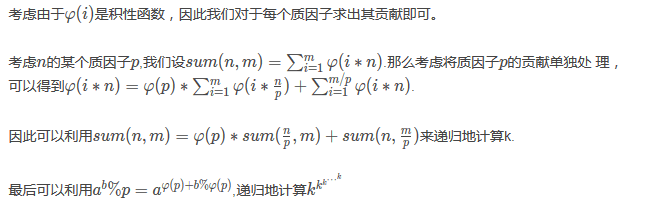hdu5728PowMod+尤拉函式和+k的無窮次方取膜
阿新 • • 發佈:2019-02-03
Problem Description
Declare:
n is a square-free number.
φ is the Euler’s totient function.
find:
ans=
There are infinite number of k
Input
Multiple test cases(test cases ≤100), one line per case.
Each line contains three integers, n,m and p.
1≤n,m,p≤107
Output
For each case, output a single line with one integer, ans.
Sample Input
1 2 6
1 100 9
Sample Output
4
7
Author
HIT
Source
2016 Multi-University Training Contest 1
#include<cstdio>
#include<cstring>
#include<cmath>
#include<algorithm>
#include<iostream>
#include<map>
#include<queue>
using namespace std 
